INTERNACIONAL
Imágenes inéditas desde el espacio revelan estructuras invisibles bajo bosques y hielo polar
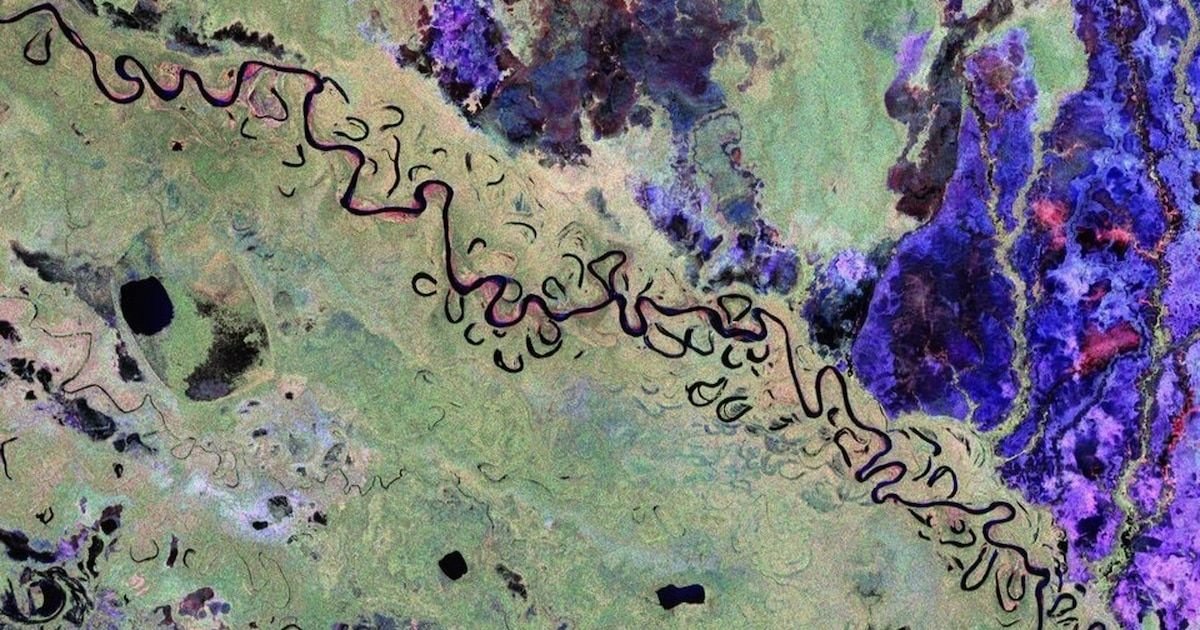
El satélite Biomass de la Agencia Espacial Europea (ESA) marcó un hito en la observación de los ecosistemas terrestres con la publicación de sus primeras imágenes. Estas capturas, presentadas el 23 de junio de 2025 durante el Simposio Planeta Vivo, demostraron la capacidad del satélite para penetrar el dosel de los bosques y medir la biomasa leñosa, un factor clave para evaluar el carbono almacenado en los ecosistemas.
De acuerdo con la información divulgada por la institución europea y a modo de ejemplo, entre las regiones observadas destaca Bolivia, un país con altas tasas de deforestación, lo que resalta la relevancia de la misión para América Latina.
Asimismo, Biomass demostró su utilidad en otros entornos extremos, como desiertos y glaciares, lo que abre nuevas posibilidades para la investigación climática y ambiental global. Este fue el primer satélite en utilizar un radar de apertura sintética de banda P, con una longitud de onda de aproximadamente 70 centímetros.
Esta tecnología permitió que las señales del radar atravesaran la vegetación densa y llegaran hasta las estructuras internas de los árboles, como troncos y ramas, donde se concentró la mayor parte del carbono forestal.
La misión tuvo como objetivo principal proporcionar datos precisos sobre el carbono almacenado en los bosques del planeta. Esta información fue fundamental para comprender el ciclo global del carbono y evaluar el papel de los ecosistemas forestales en la regulación del clima. Además, Biomass permitió realizar múltiples observaciones de una misma área, lo que mejoró la estimación de altura y biomasa forestal con un nivel de precisión sin precedentes.

En ese momento, Biomass se encontraba en fase de puesta en servicio. Durante este periodo, los equipos técnicos calibraron y afinaron los instrumentos para asegurar la calidad de los datos.
Michael Fehringer, director del Proyecto Biomass de la ESA, señaló que aún no fue posible utilizar los datos con fines científicos, pero que las primeras imágenes reflejaron un funcionamiento óptimo del satélite. La información compartida por un informe oficial indicó que el desempeño en órbita fue satisfactorio y que los resultados iniciales fueron prometedores.
La directora de Programas de Observación de la Tierra de la ESA, Simonetta Cheli, destacó que esta misión representó un avance clave en la comprensión de los bosques del planeta, al combinar tecnología de radar avanzada con objetivos científicos. En palabras recogidas por la ESA, Cheli afirmó que el objetivo fue obtener datos fundamentales sobre el almacenamiento de carbono, el cambio climático y la salud de los ecosistemas. Fehringer añadió, en tanto, que el equipo estuvo complacido con los resultados obtenidos hasta el momento y anticipó nuevas imágenes en los próximos meses.
Entre las imágenes difundidas se incluyeron regiones de Bolivia, Brasil, Indonesia, Gabón, Chad y la Antártida. La primera mostró el norte de Bolivia, un país con una de las tasas más altas de pérdida de bosque primario a nivel mundial. En esta imagen, generada mediante polarización de radar, los colores distinguieron selva tropical (verde), humedales (rojo), pastizales (azul-morado) y cuerpos de agua (negro). También se observó con claridad el curso del río Beni, que fluye hacia Brasil.

En Brasil, la imagen destacó zonas de la selva amazónica donde los tonos verdes indicaron cubierta forestal densa. El comunicado de prensa compartido por la institución destacó que esta capacidad para detectar estructuras vegetales y detalles topográficos ofreció una ventaja significativa frente a sensores ópticos tradicionales.
En Indonesia, en tanto, el satélite captó la isla de Halmahera, identificando volcanes activos como el monte Gamkonora. En Gabón, reveló el curso del río Ivindo y un paisaje dominado por bosque denso, evidenciando la capacidad del radar para captar detalles más allá del dosel arbóreo; mientras que en el desierto del Sahara, particularmente en las montañas Tibesti de Chad, logró visualizar estructuras geológicas del subsuelo.
En tanto, en la Antártida se captaron secciones de las Montañas Transantárticas y el glaciar Nimrod. La longitud de onda del radar facilitó la penetración en el hielo, permitiendo estudiar su velocidad y estructura interna. En comparación con el satélite Copernicus Sentinel-2, que operó con sensores ópticos, la principal ventaja de Biomass radicó en su capacidad para analizar toda la estructura forestal.
Mientras Sentinel-2 solo registró el dosel superior, Biomass proporcionó datos sobre la biomasa leñosa y, por ende, el carbono contenido. Esta diferencia técnica posicionó a este nuevo satélite como una herramienta única para cuantificar con precisión el carbono en los bosques y evaluar su impacto en el ciclo climático.
Más allá de los ecosistemas forestales, la ESA anticipó que Biomass sería útil en la exploración geológica y la glaciología. Su capacidad para mapear formaciones ocultas en desiertos o estudiar el interior de los glaciares podría contribuir al análisis del clima antiguo y a la evaluación de recursos hídricos en regiones áridas. De todos modos, aunque la misión siguió en fase de calibración, las primeras observaciones validaron el potencial del satélite como una herramienta transformadora para la ciencia ambiental y climática.
INTERNACIONAL
Para Bezos y Sánchez, una boda de secretos que todos conocen

Manejos
Controles
INTERNACIONAL
Senate shuts down Kaine’s attempt to check Trump’s war powers

What is the War Powers Act?
UC Berkeley Law professor John Yoo discusses U.S. strikes on Iran and the War Powers Act on ‘Life, Liberty & Levin.’
NEWYou can now listen to Fox News articles!
A Senate Democrat’s push to put a check on President Donald Trump’s powers and reaffirm the Senate’s war authority was shut down by lawmakers in the upper chamber Thursday.
Sen. Tim Kaine’s war powers resolution, which would have required Congress to debate and vote on whether the president could declare war, or strike Iran, was struck down in the Senate on a largely party-line vote, save for Sen. John Fetterman, D-Pa., a staunch advocate of Israel who supported Trump’s strike on the Islamic Republic, and Sen. Rand Paul, R-Ky., who has been vocal in his thoughts about congressional war powers in recent days.
Earlier in the week, the Virginia Democrat vowed to move ahead with the resolution despite a fragile ceasefire brokered between Israel and Iran following weekend strikes on the Islamic Republic’s key nuclear facilities that were not given the green-light by Congress.
DEM SENATOR PLOWS AHEAD WITH WAR POWERS RESOLUTION DESPITE CEASEFIRE
The White House said the president’s advisors would urge him to veto Kaine’s resolution. (Reuters)
Kaine argued that the ceasefire gave his resolution more credence and breathing room to properly debate the role that Congress plays when it comes to authorizing both war and attacks abroad.
He said ahead of the vote on the Senate floor that he came to Washington to ensure that the country does not again get into another «unnecessary» war, and invoked the rush to approve war powers for President George W. Bush over two decades ago to engage with Iraq.
«I think the events of this week have demonstrated that war is too big to consign to the decisions of any one person,» Kaine said.
‘NOT CONSTITUTIONAL’: CONGRESS EVOKES NEW WAR POWERS RESOLUTION TO REJECT TRUMP’S STRIKES ON IRAN
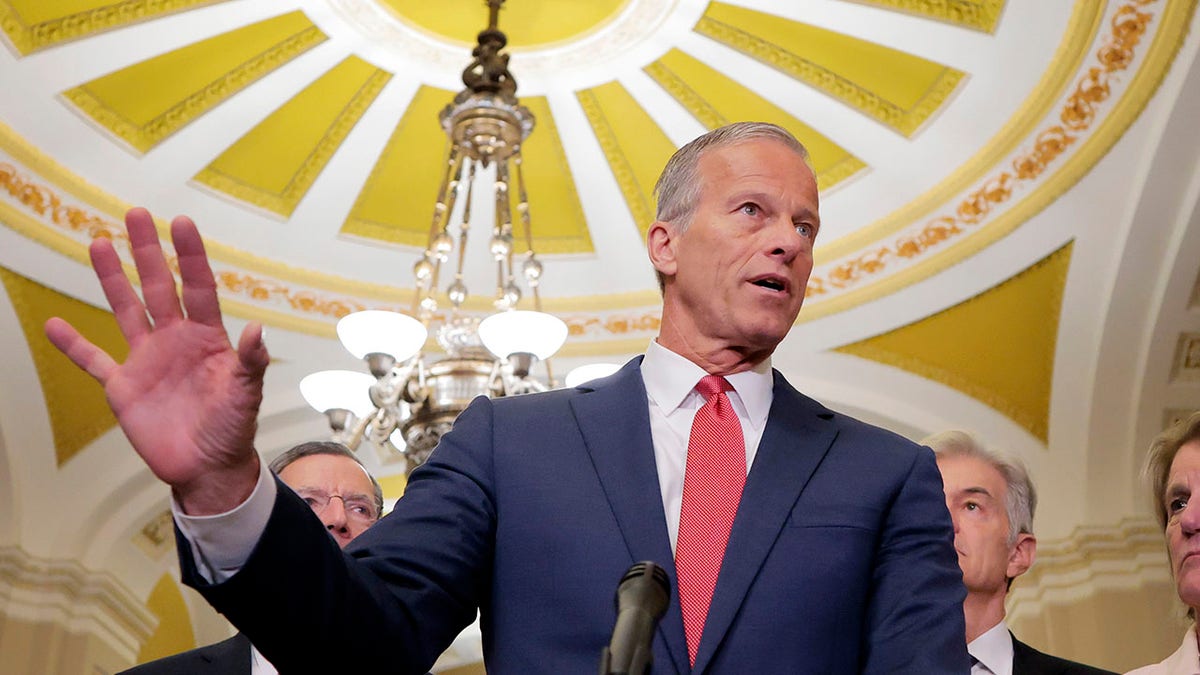
Senate Majority Leader John Thune speaks during a news conference following the weekly Senate Republican policy luncheon at the U.S. Capitol on June 17, 2025. (Getty Images)
Indeed, his resolution became a focal point for a debate that has raged on Capitol Hill since Israel began its bombing campaign against Iran: whether the strikes like those carried out during Operation Midnight Hammer constituted an act of war that required congressional approval, or if Trump’s decision was under his constitutional authority as commander in chief.
CLICK HERE TO GET THE FOX NEWS APP
Senate Republicans have widely argued that Trump was well within his purview, while most Senate Democrats raised constitutional concerns about the president’s ability to carry out a strike without lawmakers weighing in.
Experts have argued, too, that Trump was within his executive authority to strike Iran.
The Constitution divides war powers between Congress and the White House, giving lawmakers the sole power to declare war, while the president acts as the commander in chief directing the military.
And nearly two centuries later, at the height of the Vietnam War, the War Powers Resolution of 1973 was born, which sought to further define those roles.
But the most impact lawmakers could have is through the power of the purse, and Sen. Mitch McConnell, R-Ky, who plays a large role in controlling the purse strings as the Senate Appropriations Subcommittee on Defense, had a sharp message against Kaine’s resolution.
McConnell used instances where Democratic presidents over the last three decades have used their authority for limited engagements in Kosovo, Libya, Syria and Yemen, and questioned why «isolationists» would consider the strike on Iran to kneecap its nuclear program a mistake.
«I have not heard the frequent flyers on War Powers resolutions reckon seriously with these questions,» he said. «Until they do, efforts like this will remain divorced from both strategic and constitutional reality.»
INTERNACIONAL
Iran warns of ‘real capabilities’ if Trump doesn’t drop ‘disrespectful’ tone toward supreme leader
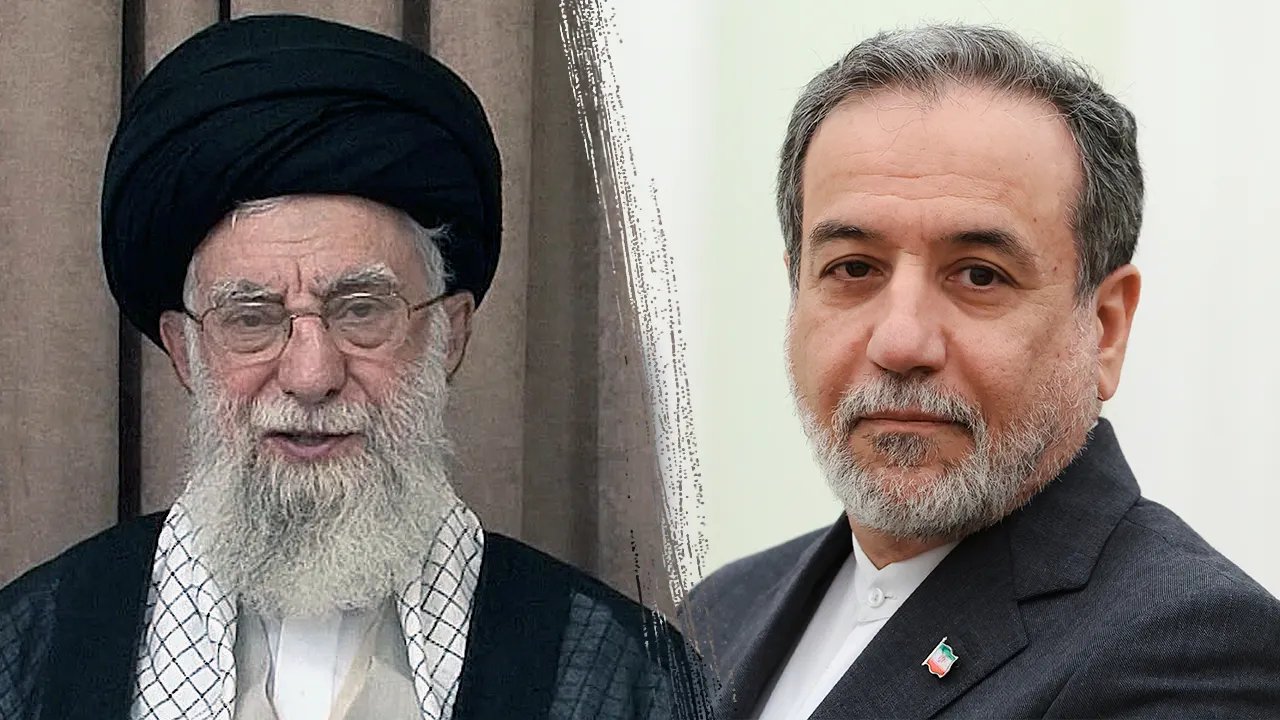
NEWYou can now listen to Fox News articles!
Iranian Foreign Minister Abbas Araghchi warned President Donald Trump Friday to drop what he called a «disrespectful» tone toward Tehran’s supreme leader or face serious consequences.
In a blunt post on X, Araghchi said if Trump truly wants a deal with Iran, he must show respect instead of insulting Ayatollah Ali Khamenei.
Araghchi wrote that Trump should «put aside the disrespectful and unacceptable tone» toward Khamenei and «stop hurting [Khamenei’s] millions of heartfelt followers.»
IRAN’S SUPREME LEADER SLAMS TRUMP JUST DAYS AFTER US STRIKES ON NUCLEAR SITES
Iranian Supreme Leader Ayatollah Ali Khamenei speaks Thursday in a televised speech under a portrait of the late revolutionary founder Ayatollah Khomeini. (Office of the Iranian Supreme Leader via AP)
Araghchi wrote, «The complexity and tenacity of Iranians is famously known in our magnificent carpets, woven through countless hours of hard work and patience. But as a people, our basic premise is very simple and straightforward: we know our worth, value our independence, and never allow anyone else to decide our destiny.»
Araghchi’s most provocative line came as he mocked Israel’s reliance on the U.S. during the recent military confrontation.
«The Great and Powerful Iranian People, who showed the world that the Israeli regime had NO CHOICE but to RUN to ‘Daddy’ to avoid being flattened by our Missiles,» he wrote, referring to U.S. intervention in striking Iranian nuclear sites.
The jab was a pointed reference to the longstanding U.S. and Israeli alliance and a not-so-subtle attempt to portray Israel as weak and dependent.
The post concluded with a clear threat.
«If Illusions lead to worse mistakes, Iran will not hesitate to unveil its Real Capabilities, which will certainly END any Delusion about the Power of Iran. Good will begets good will, and respect begets respect.»
IRAN’S KHAMENEI LAUNCHES BLISTERING ATTACK ON TRUMP AFTER MIDDLE EAST VISIT
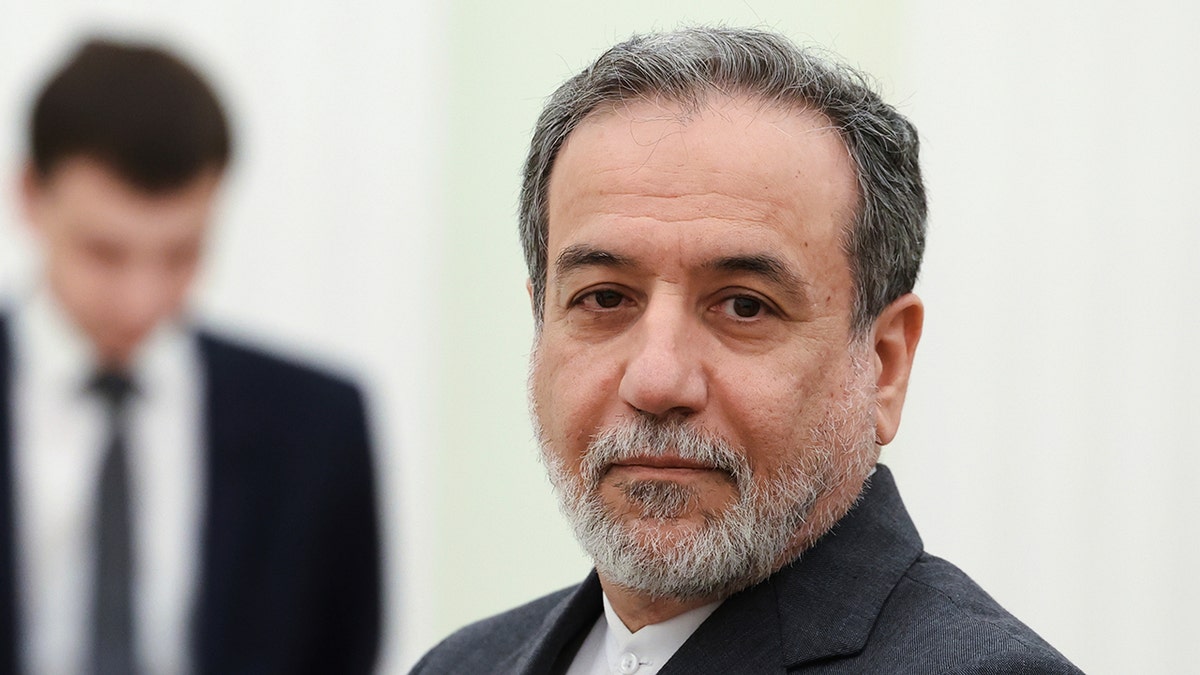
Iranian Foreign Minister Abbas Araghchi took to X Friday with a message for President Trump. (Alexander Kazakov, Sputnik, Kremlin Pool Photo via AP)
Araghchi’s broadside comes just days after the war between Iran and Israel ended and less than a week after U.S. airstrikes ordered by Trump destroyed Iran’s key nuclear sites of Fordow, Natanz and Isfahan.
The 12-day conflict ended June 24 under a U.S.-brokered ceasefire, yet postwar tensions remain high. Khamenei declared that Tehran had beaten Israel and even dealt Washington a «slap» in the confrontation.
Trump rejected Khamenei’s victory claims as false and «foolish.» He promptly froze any talk of sanctions relief for Iran in response and claimed he personally stopped Khamenei from being killed during the conflict, writing on Truth Social that he refused to let U.S. or Israeli forces «terminate» the ayatollah despite knowing his secret location.
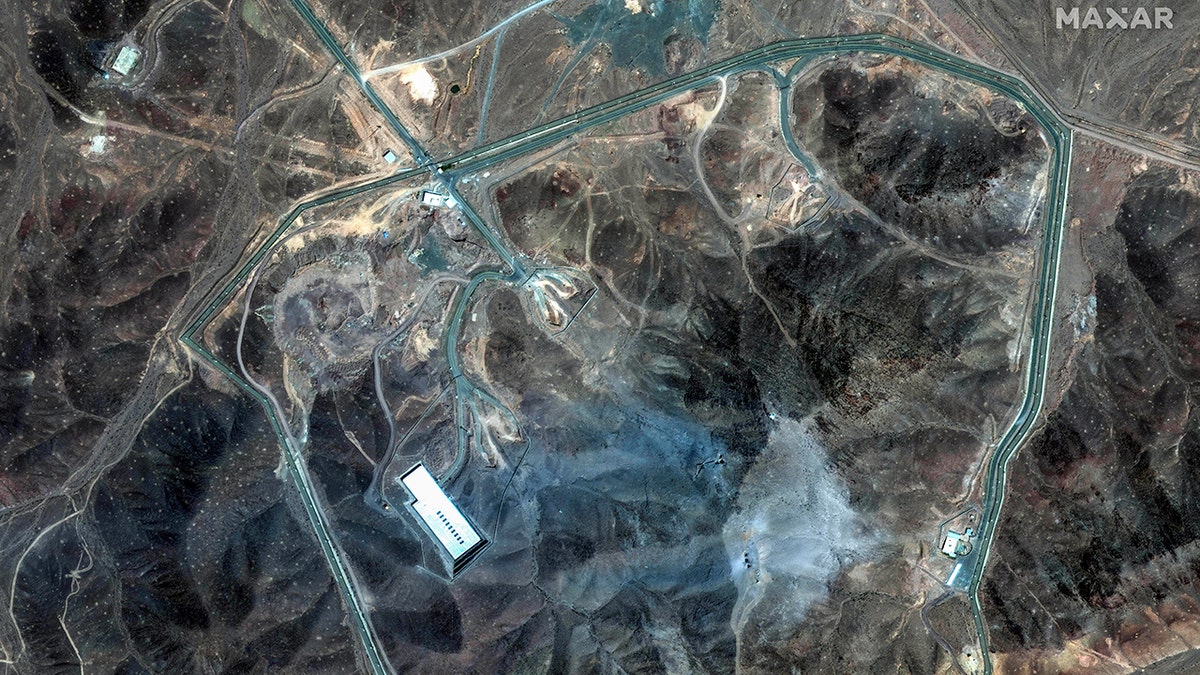
A satellite image provided by Maxar Technologies shows damage at the Fordow enrichment site in Iran after U.S. strikes last weekend. (Maxar Technologies via AP)
Araghchi also rejected President Trump’s recent claim that new nuclear talks were imminent, telling reporters that «there are no negotiations underway» and that Tehran would make decisions «based on our national interests.»
According to Reuters, the foreign minister flatly denied any plans to meet with U.S. officials next week, contradicting Trump’s earlier remarks suggesting diplomacy was back on track.
CLICK HERE TO GET THE FOX NEWS APP
«I wish the leadership of Iran would realize that you often get more with HONEY than you do with VINEGAR,» wrote Trump on Truth Social. «PEACE!!!»
The White House did not immediately respond to Fox News Digital’s request for comment.
-

 POLITICA2 días ago
POLITICA2 días agoJavier Milei apuntó duro al Chiqui Tapia por la eliminación de River y Boca: “Le hace mal al fútbol”
-

 POLITICA1 día ago
POLITICA1 día agoDesconfianza de los intendentes del PRO sobre el avance de las negociaciones con LLA: “Hasta ahora nadie acercó una propuesta”
-
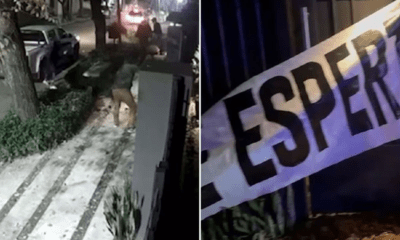
 POLITICA2 días ago
POLITICA2 días agoDetuvieron a una funcionaria del Ministerio de la Mujer bonaerense por el ataque a la casa de José Luis Espert























